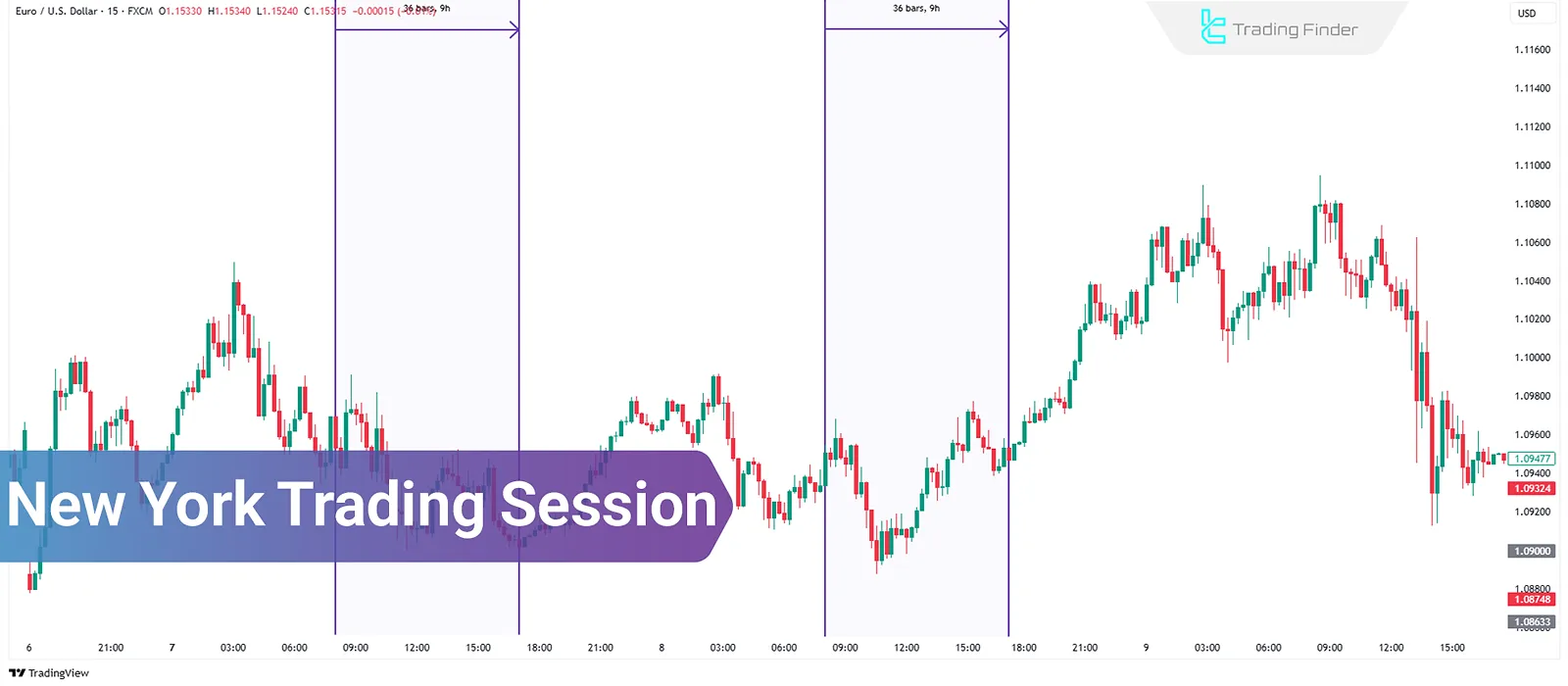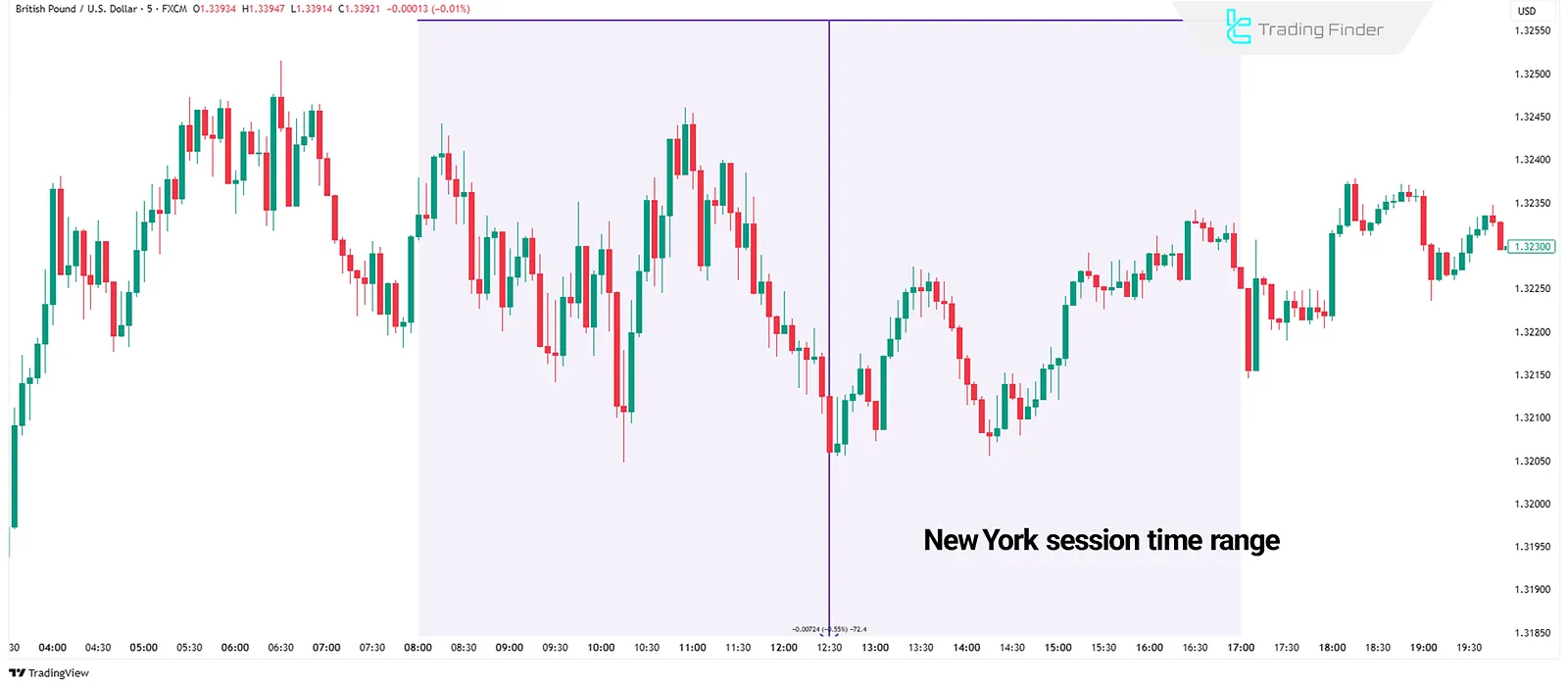During the New York session, liquidity spikes and volatility reaches its peak. This session starts at 8:00 AM local New York time and continues until 5:00 PM, coinciding with the return of European traders from their midday break.

Why Is the New York Session Important?
New York is one of the largest financial centers in the world and a major hub for the Forex Market. Due to the high volume of transactions and the impact of U.S. economic news, this session plays a major role in forex trading.
It operates from 8:00 AM to 5:00 PM (New York local time). Key Characteristics of the New York Session:
- Early overlap with the London session increases liquidity and reduces trading costs (lower spreads);
- Market activity declines during the later hours;
- Many U.S. economic reports are released in the early part of the session and have a strong market impact;
- Reduced liquidity in the afternoon as European markets close;
- Lower activity on Fridays, as many traders’ close positions in the second half of the day, often leading to trend reversals.

Three Phases of the New York Trading Session
The New York session can be broken down into three major phases:
- Morning (8:00 AM – 12:00 PM): Maximum volatility and trading volume due to overlap with the London session;
- Noon (12:00 PM – 1:00 PM): Liquidity dips and the market enters a quieter phase;
- Afternoon (1:00 PM – 4:00 PM): As the NYSE closes at 4:00 PM, many traders close positions and activity drops.
Average Volatility of Currency Pairs in the New York Session
High trading volume results in significant market movement. Here is the average pip range for key forex pairs during this session:
Average Volatility (Pips) | Currency Pair |
15 | USD/CHF |
25 | EUR/JPY |
31 | GBP/JPY |
19 | AUD/JPY |
9 | EUR/GBP |
12 | EUR/CHF |
16 | EUR/USD |
20 | GBP/USD |
23 | USD/JPY |
13 | AUD/USD |
12 | NZD/USD |
17 | USD/CAD |
Note: These figures are based on historical averages and may vary depending on market conditions.
What Makes the New York Session Unique?
Here are some of its defining characteristics:
- High liquidity in the morning: Due to the London overlap;
- Impact of economic news: Most major U.S. reports are released at the session’s start;
- Reduced liquidity in the afternoon: Follows the European market close;
- Lower activity on Fridays: Many traders close positions, potentially reversing market trends.

Who Should Trade the New York Session?
This session suits traders seeking frequent opportunities, high liquidity, and significant volatility. It’s also an ideal time for news-based trading.
Which Currency Pairs to Trade During the New York Session?
While most currency pairs are tradable, some are better due to higher liquidity in Market and tighter spreads. Recommended pairs to trade in New York session:
- Major Pairs (Majors): EUR/USD, GBP/USD, USD/JPY, USD/CHF are known for highest volume and tightest spreads;
- USD-Related Pairs: These pairs tend to react sharply to U.S. economic data;
- Cross Pairs: EUR/JPY and GBP/JPY are attractive due to their elevated volatility.
Conclusion
The New York trading session is one of the most influential and volatile in the forex market. Overlapping with the London session, it plays a critical role in shaping daily market direction. Traders can benefit from high volatility by focusing on major pairs, USD-based pairs, and volatile cross pairs.





